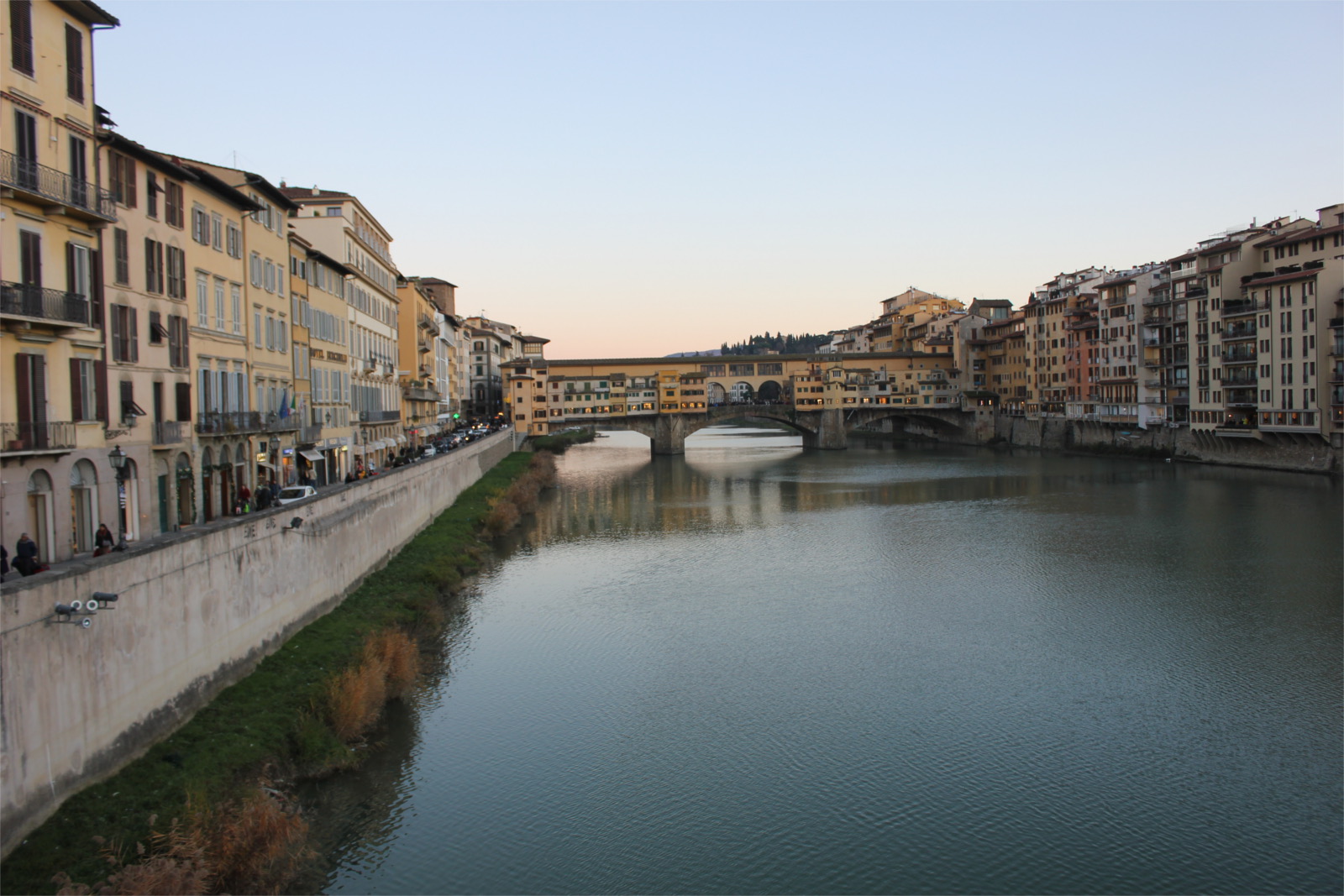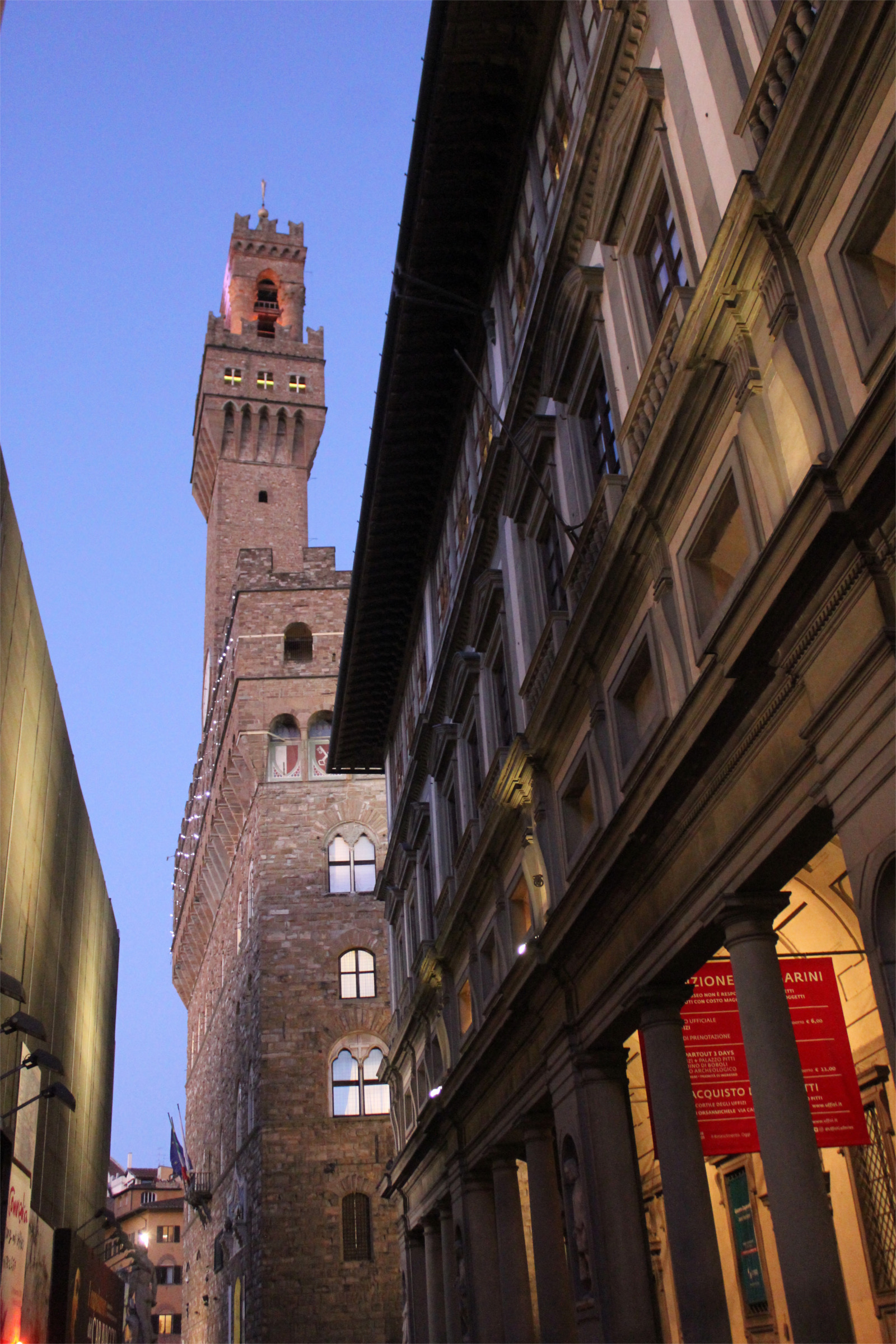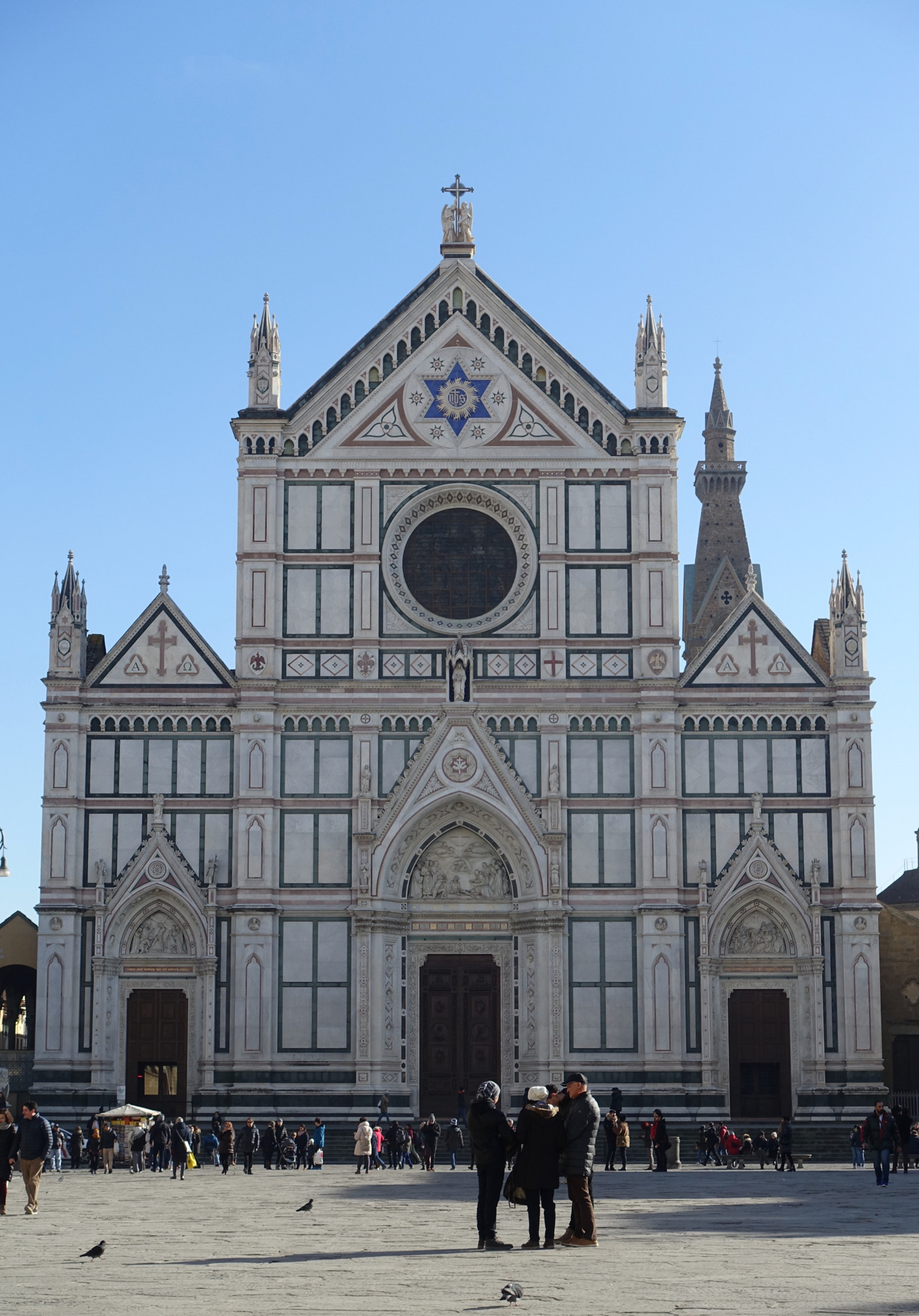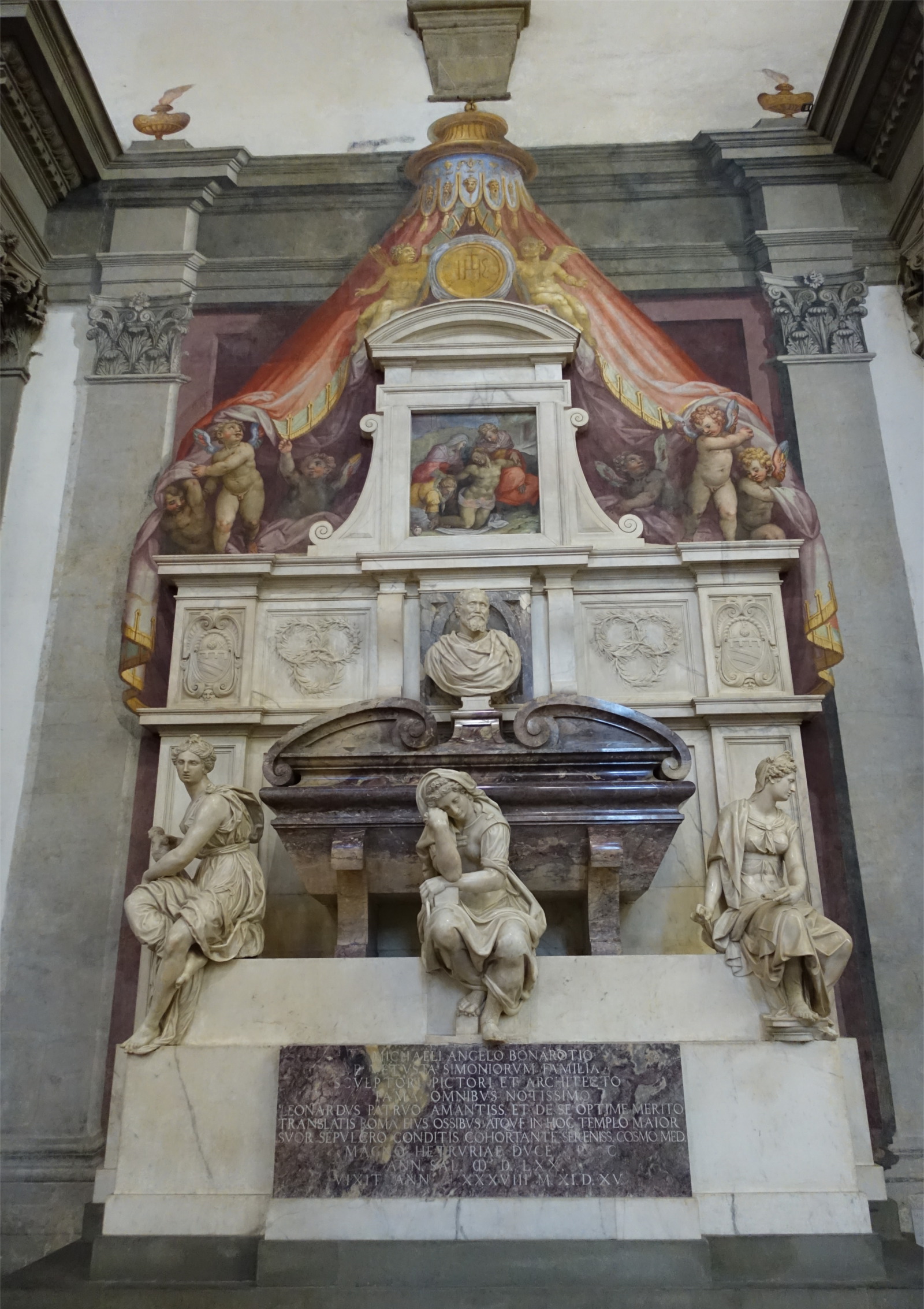Florence (Firenze)

ⅰ)Republican Spirit
Toscana (Tuscany) is a well-cultivated, very smiling region, although it perhaps fails to strike the imagination like the environs of Rome do. The Romans have so effectively wiped out the primitive institutions of the people who used to live in Tuscany that there remain almost no traces of the past that arise so much interest in both Rome and Naples. But you can see other kinds of historical beauties in Tuscany—the towns that bear the stamp of the republican spirit of the Middle Ages. At Siena, for example the public square, Il Campo, where the people assembled, and the balcony from which its mayor addressed them, they strike the least thoughtful of travelers. You can feel that a democratic government existed there.
(Corinne, 18-II)
Florence recalls its history before the elevation of the Medici to sovereignty. The palaces are built like fortresses, from where you can defend yourself; the iron rings are outside, where the standards would be fixed, although they seem more adapted to maintaining individual powers than uniting common interests. It seems as if the town was built for civil war.(Corinne, 7-II)
From the towers of the Palazzo di Giustizia (Palace of Justice), you could see the enemy approach. The spite among the various families was so great that it is revealed in the grotesque construction of some of the palaces, evident care being taken to avoid touching their enemy’s land. Here the Pazzis conspired against the Medicis; there the Guelphs had assassinated the Ghibellines. The traces of rivalry and struggles are everywhere. But, just now, a slumber has fallen on this place, and the stone buildings alone retain their former attitude. No one hates his brother, because his brother does not assume, because a state—without glory as without power—is no more disputed by its inhabitants.(Corinne, 7-II)

Explanation
Florence owes its original foundation to the Etruscans sometime between the 6th and 7th centuries BC. However, as Staël remarks, their primitive civilization was completely wiped out by the Roman invaders, who eventually transformed it into a Roman military colony sometime in the 1st century BC. Conquered by Charlemagne in 774, Florence became part of the March of Tuscany. After a long period of civic revival beginning in the 10th century, Tuscany began a new political life as an autonomous medieval commune with its political center in Florence in 1115. Thus, the Republic of Florence was founded.
The municipality was directed by the lordship of Florence but was incessantly divided by wars of influence between the different factions, clans, and Florentine families seeking to take power over the city. In particular, the Florentine republic suffered long-standing quarrels between the papacy and the republic, forming the two famous parties called the Guelphs and the Ghibellines, the former supporters of the Pope and the latter supporters of the republic.
The Pazzi conspiracy was a failed plot by members of the Pazzi family to displace the Medici family as rulers of Renaissance Florence. On April 26, 1478, the Pazzis tried to assassinate Lorenzo de Medici and his brother Giuliano. Lorenzo was wounded but survived, whereas his brother was killed. The failure of the plot, however, served to enhance the political stability of the Medici in the city while banishing the Pazzi from Florence.
Thus, Staël’s view of Florence is very different from its reputation today, of it being the heart of the Italian Renaissance as it gained preeminence in commerce, finance, knowledge, and, especially, the arts during the 14th-16th centuries. Rather than reflecting Staël’s view, this less artistic and more politically meaningful image of Florence prior to the Renaissance was rather common in late 18th-century Europe when Enlightenment philosophers, such as Rousseau and Montesquieu, proclaimed freedom, republicanism, and democracy along with their corresponding sober and virtuous citizens. By contrast, their contemporary Italy’s lack of national cohesion had led to a neglect of early modern Italian history, including the Medici rule. In other words, the Renaissance arts with their physical beauties constituted a polemical issue in relation to their relevance or not to republican liberty.
Staël actually uses the word ‘slumber’ to describe the mental state of the Florentine people politically dominated by other peoples. But by what people? The novel takes place in 1794-1795, which means that Florence was under Austrian control. However, Staël actually visited Florence in 1804 when the city was the capital of the Napoleonic client state, the Kingdom of Etruria. Florence’s freedom was not yet close, with the city then annexed directly into the French Empire. After the fall of Napoleon, the Habsburg-Lorraine dynasty was restored on the throne of Tuscany, finally deposed in 1859. Tuscany eventually became a region of the Kingdom of Italy in 1861.
ⅱ)Basillica of Santa Croce (Basilica di Santa Croce)

This church of Santa Croce contains the most brilliant assemblage of the dead of any church in Europe. […] Here is Galileo, who was persecuted by men because he learned the secrets of the stars; not far off is Machiavelli, who revealed the art of crime from watching a criminal, but his lessons profit oppressors more than the oppressed… (18-IV)

Corinne’s eyes lowered as she uttered this prayer, and all at once they fell upon the inscription on the tomb upon which she was kneeling: ‘Alone at my rising, alone at my lying down, alone also here.’ (18-IV)
Explanation
The Basilica of Santa Croce was a burial place for prominent Italians, such as Michelangelo, Galileo, Machiavelli, Giovanni Gentile, and Rossini, and it is therefore also called the ‘Italian Glory Pantheon’.
ⅲ)Machiavelli

Public Domain
Observation of the human heart is an inexhaustible spring of literature. But nations to which poetry is more natural than reflection yield themselves up to the intoxication of joy rather than to philosophical irony. There is something sad at heart in jesting based upon knowledge of mankind; harmless gaiety is merely imagined. It is not that Italians do not study skillfully those with whom they act and find out more closely than any other people their secret thoughts, but they use this gift to guide them in their conduct—not at all in literary pursuits.
Machiavelli, however, far from hiding anything, made known all the secrets of criminal policy. And by him, we might see what terrible knowledge of the human heart Italians are capable of understanding. (Corinne, 7-II)
Explanation
Niccolò Machiavelli (1469-1527) is a famous Italian Renaissance political philosopher and statesman and was secretary of the Florentine republic. He wrote the Prince in 1513, which made him world famous. In the turmoil caused by the invasion of Italian small states by foreign powers, Machiavelli discussed the necessity and method of unification. He wrote the now-famous saying that “We do not choose means for purpose,” implying that politics should employ fear, military power, and conspiracy techniques. Thus, he separated politics from religion and moral ideals, although he did not deny the worth of virtuous princes. Staël critically describes the Italian thinker as an atheist and immoral cynic and even superimposes his image onto Napoleon, although she actually admired aspects of Machiavelli’s constitutional theory.
Reference
- Mme de Staël, ‘Corinne ou l’Italie,’ Œuvres complètes, série II, Œuvres littéraires, tome III, ed. Simone Balayé, (Paris, 2000).
- Encyclopedia Britannica
- Guide bleu, Italie, Michelin, 2018.
Travel to Italy in order to conduct this research was rendered possible thanks to the Otsuma Grant-in Aid for Individual Exploratory Research (Grant Number S3023). I express my sincere gratitude to the Institute of Human Culture Studies of Otsuma Women’s University, Tokyo, Japan.
All pictures were taken by myself unless otherwise indicated.
It is strictly prohibited to copy either pictures or phrases from this site.
You are welcome to link to this album. Just let me know in advance.

Explanation
Tuscany is obviously a highly popular destination in Italy, the main tourist spots including Florence, Pisa, Lucca, Siena, Versilia, Maremma and Chianti.
Here, Staël specifically refers to Piazza del Campo in the Siena historical district from a political standpoint. The three hills are formed in a concavity where they meet, so that they incline like an amphitheater toward a spherical base. This is considered one of Europe’s best medieval squares, famous worldwide for its beauty and architectural integrity.